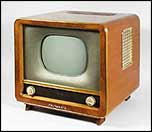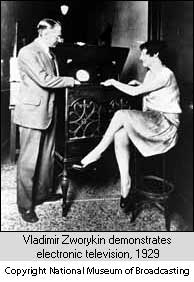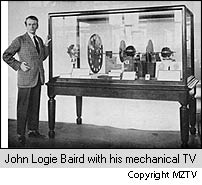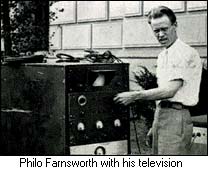Doodling Shake Bot DIY STEM Kit
$9.99$4.95
 Who is the inventor of television? You have really opened up a can of worms with
that question! Probably no other invention in history has been so hotly disputed
as the prestigious claim to the invention of 'Tele-vision or 'long-distance sight'
by wireless.'
Who is the inventor of television? You have really opened up a can of worms with
that question! Probably no other invention in history has been so hotly disputed
as the prestigious claim to the invention of 'Tele-vision or 'long-distance sight'
by wireless.'
 Zworykin is usually credited as being the father of modern television. This was
because the patent for the heart of the TV, the electron scanning tube, was first
applied for by Zworykin in 1923, under the name of an iconoscope. The iconoscope
was an electronic image scanner - essentially a primitive television camera.
Farnsworth was the first of the two inventors to successfully demonstrate the
transmission of television signals, which he did on September 7, 1927, using a
scanning tube of his own design. Farnsworth received a patent for his electron
scanning tube in 1930. Zworykin was not able to duplicate Farnsworth's
achievements until 1934 and his patent for a scanning tube was not issued until
1938. The truth of the matter is this, that while Zworykin applied for the patent
for his iconoscope in 1923, the invention was not functional until some years later
and all earlier efforts were of such poor quality that Westinghouse officials
ordered him to work on something 'more useful.'
Zworykin is usually credited as being the father of modern television. This was
because the patent for the heart of the TV, the electron scanning tube, was first
applied for by Zworykin in 1923, under the name of an iconoscope. The iconoscope
was an electronic image scanner - essentially a primitive television camera.
Farnsworth was the first of the two inventors to successfully demonstrate the
transmission of television signals, which he did on September 7, 1927, using a
scanning tube of his own design. Farnsworth received a patent for his electron
scanning tube in 1930. Zworykin was not able to duplicate Farnsworth's
achievements until 1934 and his patent for a scanning tube was not issued until
1938. The truth of the matter is this, that while Zworykin applied for the patent
for his iconoscope in 1923, the invention was not functional until some years later
and all earlier efforts were of such poor quality that Westinghouse officials
ordered him to work on something 'more useful.'
 Another player of the times was John Logie Baird, a Scottish engineer and entrepreneur who 'achieved his first transmissions of simple face shapes in 1924 using mechanical television. On March 25, 1925, Baird held his first public demonstration of 'television' at the London department store Selfridges on Oxford Street in London. In this demonstration, he had not yet obtained adequate half-tones in the moving pictures, and only silhouettes were visible.' - MZTV
Another player of the times was John Logie Baird, a Scottish engineer and entrepreneur who 'achieved his first transmissions of simple face shapes in 1924 using mechanical television. On March 25, 1925, Baird held his first public demonstration of 'television' at the London department store Selfridges on Oxford Street in London. In this demonstration, he had not yet obtained adequate half-tones in the moving pictures, and only silhouettes were visible.' - MZTV
 In the height of the legal battle for patent priority, Farnsworth's high school
science teacher was subpoenaed and traveled to Washington to testify that as a 14
year old, Farnsworth had shared his ideas of his television scanning tube with his
teacher.
In the height of the legal battle for patent priority, Farnsworth's high school
science teacher was subpoenaed and traveled to Washington to testify that as a 14
year old, Farnsworth had shared his ideas of his television scanning tube with his
teacher.
 'Arrows of hate have been shot at me too, but they have never hit me, because somehow they belonged to another world with which I have no connection whatsoever.'
'Arrows of hate have been shot at me too, but they have never hit me, because somehow they belonged to another world with which I have no connection whatsoever.'